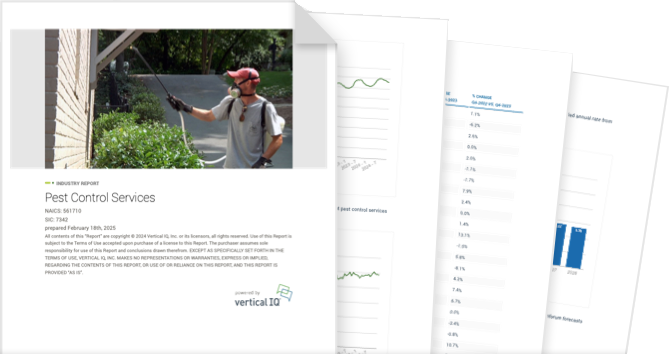Heavy Duty Truck Manufacturers NAICS 336120

Unlock access to the full platform with more than 900 industry reports and local economic insights.
Get access to this Industry Profile including 18+ chapters and more than 50 pages of industry research.
Industry Summary
The 76 heavy duty truck manufacturers in the US produce heavy-duty trucks; heavy duty truck, tractor, and bus chassis; buses; and firefighting vehicles. Additional product categories include replacement parts and other types of trucks. Firms may also offer financing and leasing programs to support purchases.
Sensitivity to Freight Volume and Economic Conditions
The heavy duty truck market is cyclical and highly sensitive to global and national economic conditions.
Government Regulation
Environmental and safety regulations continue to push heavy-duty truck manufacturers to make substantial changes to their fleets.
Recent Developments
Nov 20, 2025 - Heavy Duty Truck Sales Slide
- Sales of heavy duty trucks sank 14.7% year over year in July 2025, according to the Bureau of Labor Statistics, as companies pulled back on spending due to tariffs and overall economic anxiety. Companies are reluctant to spend money on big capital purchases, like semi trucks, when they see tariffs causing widespread disruption on import prices and supply chains. Also contributing to the dip in heavy duty truck sales volume is low demand. Fleet sizes are at overcapacity and the surplus contributes to lower freight rates, which squeezes profitability and discourages freight transporters from investing in new trucks. Other factors keeping truck buyers away is uncertainty about what kind of electric vehicle mandates the industry might face and high interest rates and financing costs. The gloomy industry outlook means carriers are instead maintaining their current fleets as long as possible.
- Freight transportation forecaster FTR Transportation Intelligence downgraded its prediction for production levels of North American Class 8 trucks as the uncertainties in the market from US tariffs hamper new order demand. FTR’s adjusted prediction calls for shipments of about 240,000 Class 8 trucks in 2025, down from the previously estimated 288,000. Excess truck inventory and weak freight demand from tariffs have put the trucking industry in a bind and pushes a planned rebound of the industry into 2026 and maybe even 2027, per FTR experts. Equipment makers are pulling back on production to compensate, with Paccar - maker of Peterbilt and Kenmore trucks - scaling back its 2025 sales forecast, while engine maker Cummins delayed the launch of its latest heavy duty diesel engine from this year until the end of 2026. Trucking companies also worry about potential future tariffs on Class 8 trucks and parts themselves.
- Heavy duty truck orders fell significantly in Q2 2025 amid low demand from freight carriers with tariff concerns and the rescinding of EV mandates driving the dip. According to Freight Transportation Research (FTR), the most recent 12-month sales cycle that ended in July showed a 15% year-over-year drop in new truck orders. The industry expects the sector’s performance for the rest of the year to be even worse. Engine maker Cummins CEO Jennifer Rumsey said in a recent earnings call that the company expects demand for North American heavy and medium duty trucks to dip by as much as 30% by the end of Q3. “The duration of this reduced demand in North America truck markets will largely depend on the trajectory of the broader economy, the evolution of trade and tariff policies and the pace at which regulatory clarity emerges,” said Rumsey.
- The US House of Representatives and the Senate voted in May 2025 to undo waivers from the Environmental Protection Agency that allowed California to set aggressive vehicle pollution standards in its state. It is the latest attempt by Congress to set aside California’s mandates for trucking’s transformation to electric vehicles (EVs) and its plan for 35% of new automobiles sold to be zero-emission. California is one of the nation’s biggest auto markets and a dozen other states, who can’t set standards of their own, nevertheless followed California’s lead on EVs. Accordingly, roughly 30% of the US auto market could be affected since they followed the Golden State’s lead. Trucking trade associations and auto makers, who have long felt the targets were unrealistic and overly aggressive, supported the move. Trump signed off on the changes, and California has indicated it might sue to get the rules reinstated.
Industry Revenue
Heavy Duty Truck Manufacturers

Industry Structure
Industry size & Structure
The average heavy duty truck manufacturer employs less than 505 workers and generates about $445.7 million annually.
- The heavy duty truck manufacturing industry consists of 76 firms that employ 38,385 workers and generates $33.8 billion annually.
- The industry is highly concentrated; the top four companies account for more than 70% of industry revenue.
- Large firms, including Navistar (TRATON Group) and PACCAR, may have operations and sell products in foreign countries.
- Firms that generate $100 million annually account for 23% of firms and 97% of industry revenue.
- There are about 2.9 million Class 8 trucks in operation in the US, according to St. Onge Company
Industry Forecast
Industry Forecast
Heavy Duty Truck Manufacturers Industry Growth

Source: Vertical IQ and Inforum
Vertical IQ Industry Report
For anyone actively digging deeper into a specific industry.
50+ pages of timely industry insights
18+ chapters
PDF delivered to your inbox
